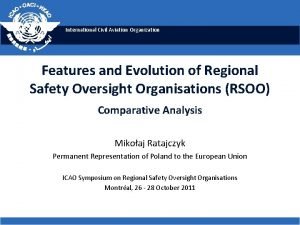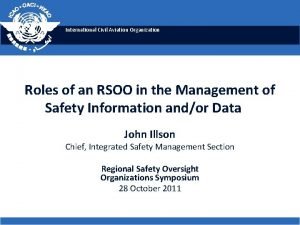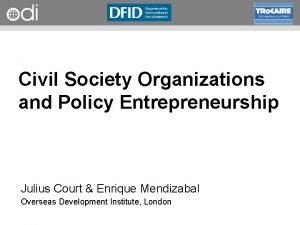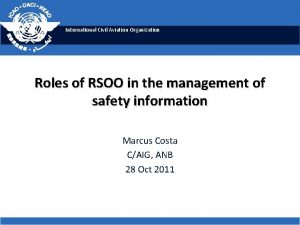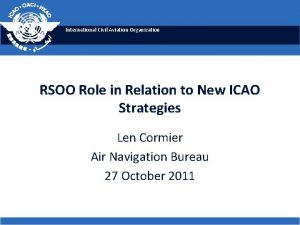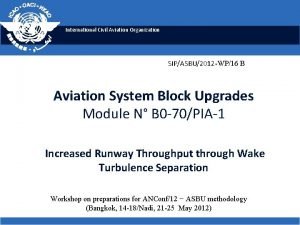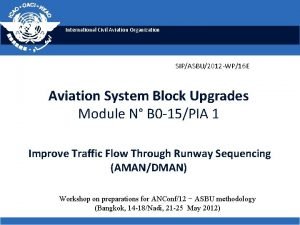International Civil Aviation Organization Roles of a RSOO








- Slides: 8

International Civil Aviation Organization Roles of a RSOO in the management of safety information and/or data Simon Clegg General Manager Government & Strategy Civil Aviation Authority New Zealand 28 October 2011

Safety Information • Safety information is the lifeblood of the safety management approach that underpins SMS, SSP & CMA • Types of safety information 1. Information obtained from oversight • Certification and audit of an operator 2. Information from post-event safety investigations 3. Information from safety reporting • Both mandatory & voluntary 2

Oversight information • Safety management approach requires regulators to move from inspection to auditing • Risk-based auditing depends upon good safety information – History of the operator from time first certificated – Shows how issues are resolved and thus establishes level of confidence in an operator to resolve its own safety issues – Requires continuity of information on an operator • Requires good databases of operators – To enable regular capture of date – These are more cost effective through a RSOO, as they can harness economies of scale 3

Safety Investigation Information • SSP has requirement for no fault accident investigation – For many small states it is not cost effective to maintain capacity to undertake this investigation • RSOOs can provide or coordinate independent accident investigators when required 4

Safety Reporting • Reporting provides some of the most valuable information for safety management – can highlight areas that need attention before they lead to accidents and safety failure • Requires trust for information to flow • To support this in national systems – Safety reporting may be to a body without enforcement powers or responsibilities – Information may be protected – Information may have restricted use 5

Safety Reporting & RSOOs • RSOO can provide an independent body to receive safety reporting – RSOOs are generally international organisations that are outside national government jurisdiction • Enables protection of information – Most RSOOs do not have enforcement powers – these are retained by the member states • Should build confidence • RSOOs would have economies of scale in processing and storing information 6

Safety Reporting & RSOOs (2) • RSOOs & members states will need to develop protocols – To ensure operators meet their mandatory reporting requirements – To enable member states to access information for • risk based auditing when done by member states • enforcement action when dealing with intentional breaches of rules 7

Summary • Safety information is critical for safety management approach – Requires continuous collection and advanced systems that can be onerous for smaller states • RSOOs can provide common and shared solution for all forms of safety information 8

